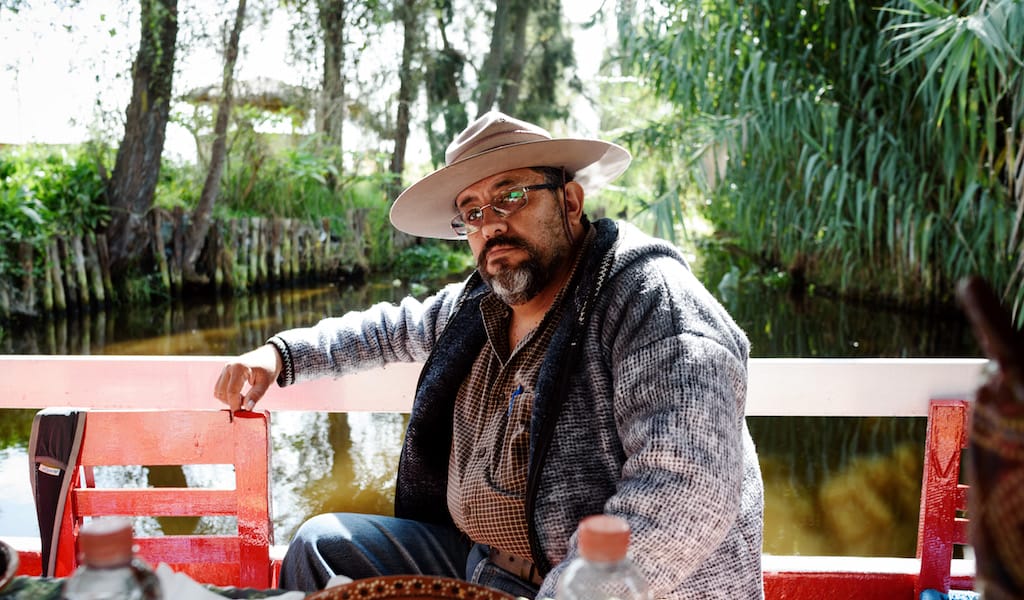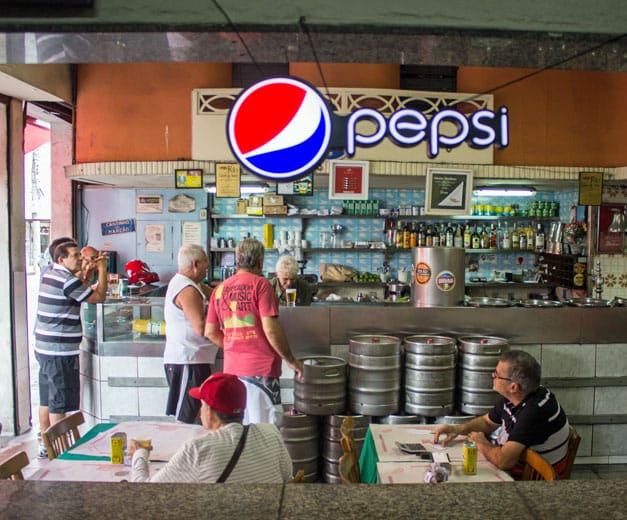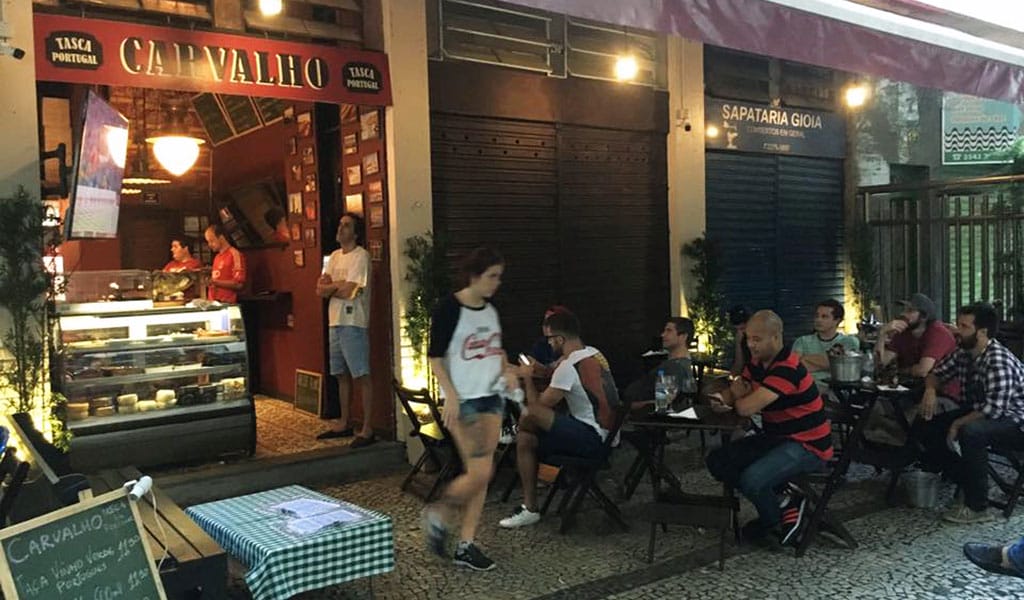Update: Refik Restaurant is sadly no longer open.
The fatty torik – the Turkish name for a large, mature Atlantic bonito, similar to the little tunny – courses the straits of the Bosphorus and the Dardanelles for just a short period each year in November and December.Yet the people of Istanbul eat it year-round by preserving the fish in a light brine, something it seems they have been doing for millennia – the Byzantines even minted coins with an image of the fish. Making lakerda is more than a means to preserve bonito for the rest of the year, however; it’s part of the city’s culinary instinct.
Around 5 a.m. one recent morning in Yenikapı, yellow rubber boots were piled high in front of the one serene spot on the sprawling grounds of the Municipal Fish Auction. Inside the “Fisherman’s Mosque,” 70 or 80 men were saying their prayers after a long frenzy on the Bosphorus. These fishermen had brought in the winter’s first haul of torik – the season’s most valuable catch. As they sat whispering their prayers, the ecosystem of middlemen was churning with negotiations that would ensure the passage of these fish from the long hangar at the seafront into local fish markets and restaurants throughout the city. Outside the mosque, vans marked with the city’s top fish restaurants filed into the damp, dark parking lot, which was littered with Styrofoam fish coolers, and the place began to smell less like fish and more like money.
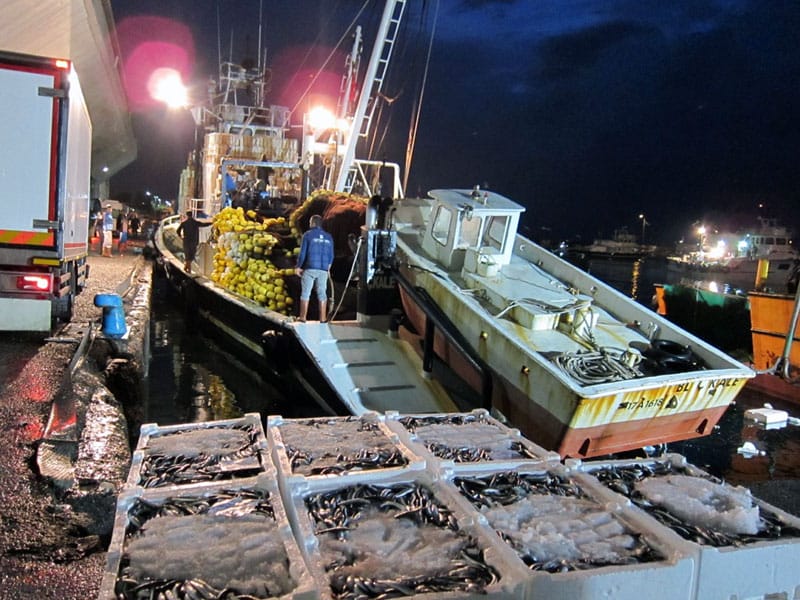
The fisherman, auctioneers, commissionmen, wholesalers, restaurant owners, trolley pushers and onlookers gathered here were giddy and unable to contain themselves as they piled around for the season’s first big torik auction. As boats offloaded their catch and wheeled it in, stacked in crates on dollies, the volume went up and the crowd surged toward the new arrivals. Great loads of hamsi, or Black Sea anchovies, came off a boat named Cengiz, the Turkish name for Genghis Khan. Then came a procession of torik packed two to a crate, their heads and tail fins protruding. Tea slingers coursed through the piles of fish, cigarettes were passed around, telephone calls were urgently placed. One man popped out from behind a stack of fish crates to surprise a vendor with a quick backhanded shot to the crotch followed by a howl, the squeak of rubber boots and friendly grappling.
“The best lakerda is made from Bosphorus torik,” Yusuf, a lakerda-maker in Beyoğlu’s fish market, told us later. The shop where he works, Reşat Balık, is a third-generation family business that has supplied traditional meyhanes around town with lakerda since the 1940s. Yusuf Bey cut the head and tail off, sliced the fish into thick medallions and ran a thin spike through the center, draining the blood before tossing it into a bucket of seawater. After cleaning it several times he would seal it in jars of salt for 10 days or so before distributing it to clients around the city.
Following a suggestion from Yusuf Bey, we next found ourselves at Refik, a traditional meyhane in Asmalımescit that serves Yusuf’s own preparations. Served over slices of raw red onions, the lakerda medallions were a deep rose in color, soft and fragrant of the sea. We felt honored by the presence of this true Istanbul native alongside our small plates of soslu patlıcan (eggplant smothered in that New World import, the tomato), Arnavut ciğeri (“Albanian” liver, which probably arrived here with refugees of the Balkan Wars), and a spicy acılı ezme that tasted of Southeast Turkey.
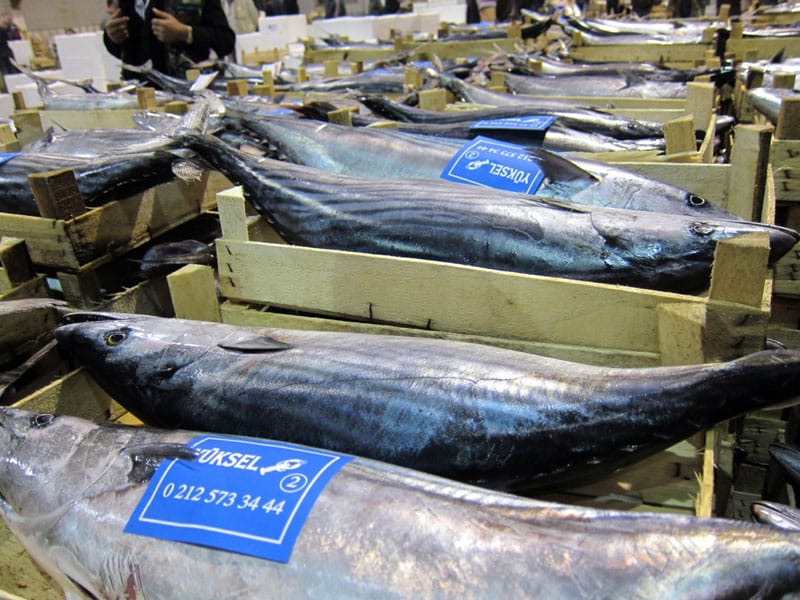
We often fear that tastes change too quickly and that much in this city is lost to the latest trend. But then we find ourselves involved in something ancient and very much alive, like drinking water from a sacred spring or eating lakerda, and we are reassured that the soul of Istanbul is healthy and well, if a little salty and often hiding in unexpected places.
This story was originally published on January 4, 2013.
 May 20, 2020 Las Crónicas del Conde
May 20, 2020 Las Crónicas del Conde
Spanish speakers, join Francisco de Santiago (“Paco”), our lead guide in Mexico City who […] Posted in Mexico City May 14, 2014 The Botequim
May 14, 2014 The Botequim
Brazil, as everybody knows, was colonized by the Portuguese. But even with the end of […] Posted in Rio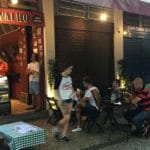 April 26, 2017 Tasca Carvalho
April 26, 2017 Tasca Carvalho
Portuguese gastronomy is at the core of Rio's botequins, the small, often family-run […] Posted in Rio
Published on February 10, 2017
Related stories
May 20, 2020
Mexico City | By Culinary Backstreets
Mexico CitySpanish speakers, join Francisco de Santiago (“Paco”), our lead guide in Mexico City who goes by Conde Pétatl on Instagram, for a new series called Las Crónicas del Conde (“The Chronicles of Conde”). From May 21 until June 16, he will chat with a different guest from around Mexico about the country’s cuisines, cultural traditions…
May 14, 2014
RioBrazil, as everybody knows, was colonized by the Portuguese. But even with the end of colonial Brazil, the Portuguese continued to come: at the beginning of the 20th century, thousands of them immigrated to flee poverty in Europe and to start anew in Brazil – especially in Rio. As the capital of the colony for…
April 26, 2017
RioPortuguese gastronomy is at the core of Rio's botequins, the small, often family-run gastrobars spread all over the city. Traditional botequins offer European food and some unique aspects of Brazilian culture – mix you’ll find only in Rio. That being said, it’s hard to say whether Tasca Carvalho, the brand new Portuguese gastrobar in Copacabana,…













































